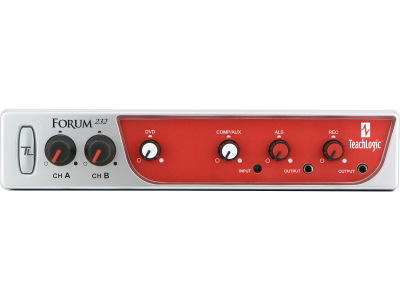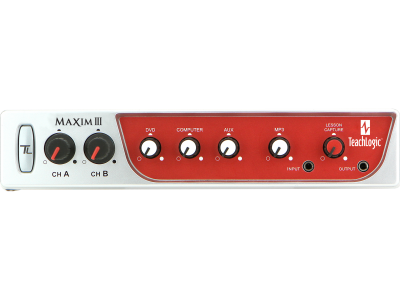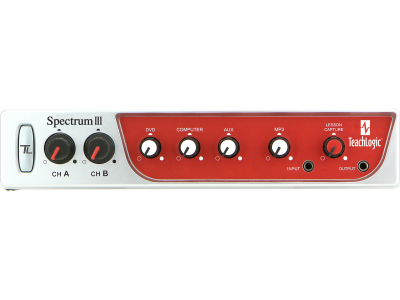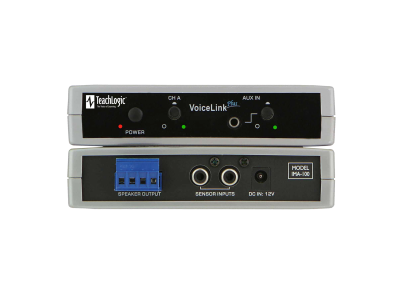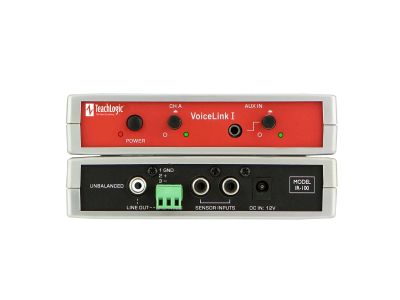Students cannot hear as well as you think.
Sarah is a ninth grade student who, like many teenagers, would rather do almost anything else than sit through Mr. Jennings’ English Language Arts class. He understands that, but he also knows that she’s been a good student in the past.
So why is she failing his class?
That’s the question Mr. Jennings is asking, but it’s not the right question. Unfortunately, he’s not aware of the right question to ask. Last week, he gave a lesson on persuasive strategies. He thought Sarah was listening because was looking right at him. He reviewed the concepts the next day before showing his class some examples of the strategies in action. But no matter how much he thought Sarah was paying attention, she failed yet another test this week.
What is the problem?
Sarah sits in the back of the class. When Mr. Jennings teaches, he’s usually speaking from the front of the room. No matter how much Sarah tries to strain her ears, she can’t hear more than a word or two every few words. And with his face mask on, any words she can make out are muffled. She doesn’t want to say anything for fear of being rude, so she tries to do the best she can. She wishes he would change the seating arrangement and move her to the front, but then someone else would struggle to hear him.
Maybe she’ll get a louder teacher in summer school, she thinks.
It’s a common occurrence in classrooms across America, and though the prevalence of it is a serious hindrance to learning, few people are talking about it. According to research, the average listening accuracy of students under normal classroom conditions is 81%. That means that students are missing 19% of the information teachers are communicating on a daily basis. To get a picture of what this looks like, read the sentence below.
Dogs and cats are mammals.
It’s just a five-word sentence. But if the research is true, what students hear may be something more like this:
Dogs and ____ are mammals.
It should come as no surprise that when the test over this information comes up, the student sitting in the back of the class is at a loss on whether a cat is a mammal or a reptile or something else.
The question Mr. Jennings should have been asking is, “How do I ensure all my students are hearing all of the information I’m communicating?”
In the midst of the COVID-19 pandemic, the requirement by many states and schools for students and teachers to wear face masks only exacerbates the problem. Face masks may help to curb the spread of COVID-19, but they also serve to attenuate the frequencies of the human voice, which impacts listeners’ ability to hear clearly. The Illinois Augmented Listening Laboratory, a research team housed at the University of Illinois at Urbana-Champaign, researched how well sound transmits through various face masks and found that masks “muffle high-frequency sounds and block visual cues.” The attenuation of these high-frequency signals makes it especially hard to hear “s,” “f,” and “th” sounds, which are the sounds most challenging for those hearing loss to pick up on.
Hearing loss is an important consideration that many teachers don’t often think about. According to the Centers for Disease and Control (CDC), about 15% of children ages 6 to 19 have hearing loss of at least 16 decibels in one or both ears.
Because a teacher’s voice decreases in volume as it travels the distance from the front of the room to the back and many students potentially suffer from hearing loss, the added challenges of wearing a face mask only amplify the problem, resulting in more and more students missing out on the opportunity to receive clearly articulated instruction.
Fortunately, the research also shows that teachers wearing a microphone while also placing speakers around the classroom can help alleviate the issues with voice intelligibility, both with teachers wearing masks, as they’re required to do, and teachers who don’t have to wear masks, as the potential for mask wearing requirements decreases in upcoming school years.
By installing a sound system with speakers positioned in each corner of the classroom, teachers can use their natural normal-volume voice, and every student can hear as if they were sitting right in front of the teacher. In Mr. Jennings’ class, this would make all the difference for Sarah’s understanding of the material and success in the classroom.
Sarah is a ninth grade student who, like many teenagers, would rather do almost anything else than sit through Mr. Jennings’ English Language Arts class. Still, she learned to be disciplined in junior high, so she expected to do well in high school. She enjoys reading, for the most part, and writing can even be fun if she finds the right topic.
So why is she failing Mr. Jennings’ class?
That’s the question Mr. Jennings is asking, but it’s not the right question. It’s not his fault, though, that he’s not aware of the right question to ask. Last week, he gave a lesson on persuasive strategies. He thought Sarah was listening. She was looking right at him. He reviewed the concepts the next day before showing his class some examples of the strategies in action. But no matter how much he thought Sarah was paying attention, she failed yet another test this week.
What is the problem?
Sarah sits in the back of the class. When Mr. Jennings teaches, he’s usually speaking from the front of the room. No matter how much Sarah tries to strain her ears, she can’t hear more than a word or two every few words. And with his face mask on, any words she can make out are muffled. She doesn’t want to say anything for fear of being rude, so she tries to do the best she can. She wishes he would change the seating arrangement and move her to the front, but then someone else would struggle to hear him.
Maybe she’ll get a louder teacher in summer school, she thinks.
It’s a common occurrence in classrooms across America, and though the prevalence of it is a serious hindrance to learning, few people are talking about it. According to research, the average listening accuracy of students under normal classroom conditions is 81%. That means that students are missing 19% of the information teachers are communicating on a daily basis. To get a picture of what this looks like, read the sentence below.
Dogs and cats are mammals.
It’s just a five-word sentence. But if the research is true, what students hear may be something more like this:
Dogs and ____ are mammals.
It should come as no surprise that when the test over this information comes up, the student sitting in the back of the class is at a loss on whether a cat is a mammal or a reptile or something else.
The question Mr. Jennings should have been asking is, “How do I ensure all my students are hearing all of the information I’m communicating?”
In the midst of the COVID-19 pandemic, the requirement by many states and schools for students and teachers to wear face masks only exacerbates the problem. Face masks may help to curb the spread of COVID-19, but they also serve to attenuate the frequencies of the human voice, which impacts listeners’ ability to hear clearly. The Illinois Augmented Listening Laboratory, a research team housed at the University of Illinois at Urbana-Champaign, researched how well sound transmits through various face masks and found that masks “muffle high-frequency sounds and block visual cues.” The attenuation of these high-frequency signals makes it especially hard to hear “s,” “f,” and “th” sounds, which are the sounds most challenging for those hearing loss to pick up on.
Hearing loss is an important consideration that many teachers don’t often think about. According to the Centers for Disease and Control (CDC), about 15% of children ages 6 to 19 have hearing loss of at least 16 decibels in one or both ears.
Because a teacher’s voice decreases in volume as it travels the distance from the front of the room to the back and many students potentially suffer from hearing loss, the added challenges of wearing a face mask only amplify the problem, resulting in more and more students missing out on the opportunity to receive clearly articulated instruction.
Fortunately, the research also shows that teachers wearing a microphone while also placing speakers around the classroom can help alleviate the issues with voice intelligibility, both with teachers wearing masks, as they’re required to do, and teachers who don’t have to wear masks, as the potential for mask wearing requirements decreases in upcoming school years.
By installing a sound system with speakers positioned in each corner of the classroom, teachers can use their natural normal-volume voice, and every student can hear as if they were sitting right in front of the teacher. In Mr. Jennings’ class, this would make all the difference for Sarah’s understanding of the material and success in the classroom.



